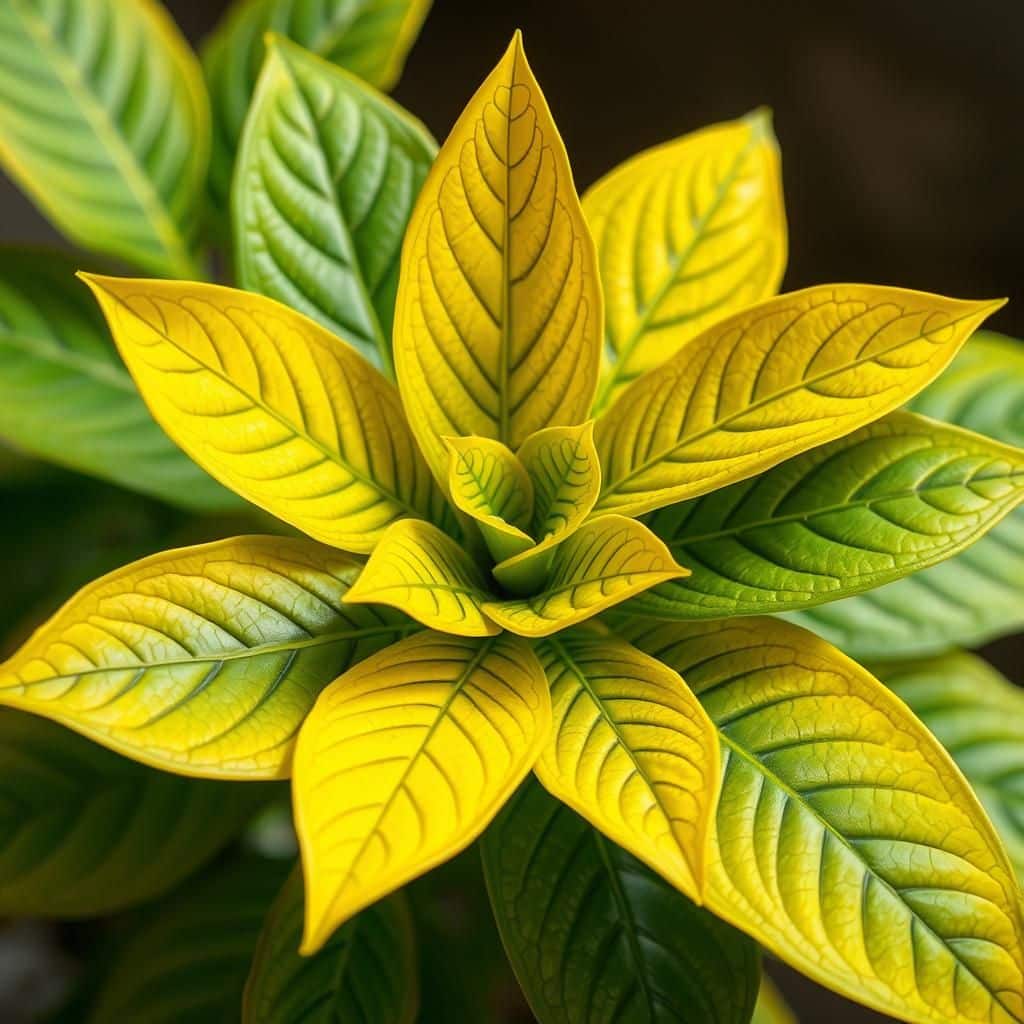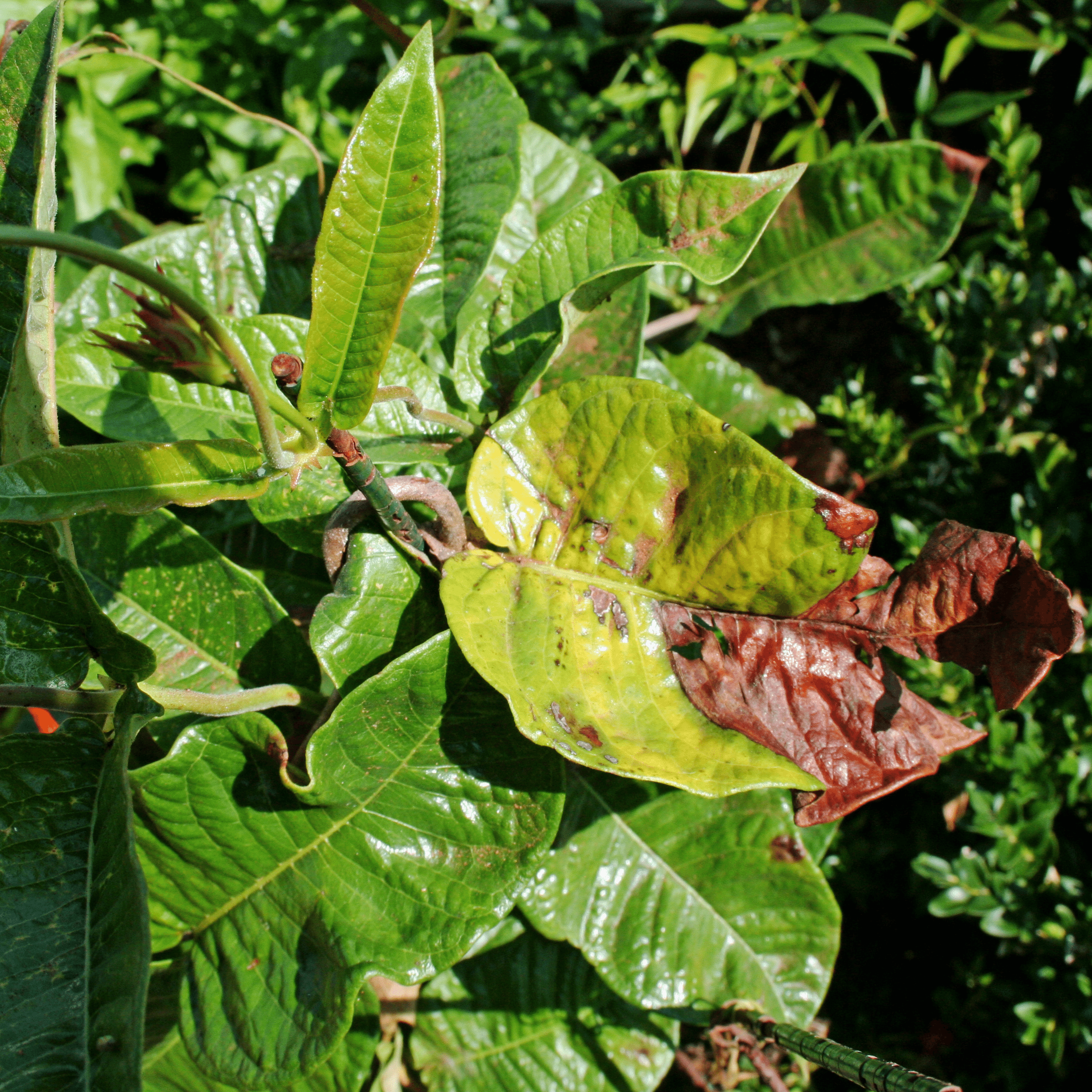How to Fix Dipladenia Plant Yellow Leaves: Causes and Solutions

Dipladenia plants are beloved for their vibrant flowers and lush foliage, but yellow leaves can signal underlying issues that need attention. Whether you're an experienced gardener or a novice plant parent, understanding the causes of yellowing leaves is crucial for maintaining a healthy Dipladenia. Factors such as improper watering, nutrient deficiencies, pests, and environmental stressors can all contribute to this problem. In this article, we will explore the common reasons behind yellow leaves in Dipladenia plants and provide effective solutions to restore their health and beauty. With the right care, your Dipladenia can thrive and bring joy to your home or garden.
Dipladenia Plant Yellow Leaves: Causes and Solutions
The appearance of yellow leaves on a Dipladenia plant can be a worrying sign for plant enthusiasts. This condition often indicates that the plant may be experiencing stress or improper care. One of the primary culprits is overwatering, which can lead to root rot, causing the leaves to turn yellow and drop. Conversely, underwatering can also lead to yellowing leaves as the plant struggles to retain moisture. Nutrient deficiencies, particularly a lack of nitrogen, can further exacerbate this issue. Additionally, the plant may be affected by environmental factors such as poor lighting or extreme temperatures, necessitating careful adjustment of its care regimen to restore its vibrant green foliage.
Common Causes of Yellow Leaves in Dipladenia
Several factors can lead to the yellowing of Dipladenia leaves. Overwatering is the most common issue, leading to root rot and inadequate oxygen supply to the roots. On the other hand, underwatering can cause the plant to become dehydrated, resulting in yellow leaves. Another significant cause is a lack of essential nutrients. Dipladenia often requires regular fertilization to ensure it receives the necessary elements, particularly nitrogen, potassium, and phosphorus. Environmental stressors, such as poor lighting or abrupt temperature changes, can also contribute to leaf yellowing.
How to Identify Overwatering and Underwatering
Determining whether your Dipladenia plant is suffering from overwatering or underwatering can be achieved through careful observation. For overwatering, the symptoms include yellowing leaves, wilting, and mushy roots when inspected. You can check the soil’s moisture level; if it feels consistently soggy, then overwatering is likely the problem. Conversely, signs of underwatering include dry, crispy leaves and soil that is parched and pulling away from the pot’s edges. In such cases, adequate watering is essential to restore health to the plant.
Nutrient Deficiencies Affecting Dipladenia
A lack of vital nutrients can significantly impact the health of your Dipladenia. Nitrogen deficiency, for instance, is known to cause older leaves to turn yellow while younger leaves usually remain green. Symptoms may also include stunted growth and a wilting appearance. Iron deficiency can result in young leaves turning yellow while the veins remain green, a condition known as chlorosis. To combat these deficiencies, it is important to use a balanced liquid fertilizer during the growing season, ensuring that the plant receives a well-rounded diet.
Environmental Stress Factors
The environment plays a crucial role in the well-being of the Dipladenia plant. If exposed to insufficient light, the plant may exhibit yellow leaves as it struggles to photosynthesize effectively. These plants thrive in bright, indirect sunlight; too little light can hinder their growth. Temperatures below 50°F (10°C) can shock the plant, causing stress that manifests as yellowing leaves. Ensuring that your Dipladenia is placed in a conducive environment, with optimal lighting and temperature, is essential for preventing stress-related yellowing.
Preventive Measures for Healthy Dipladenia
Proper care is vital in sustaining the health of your Dipladenia and preventing yellow leaves. Regularly check the soil's moisture, ensuring that it is neither too soggy nor too dry. A consistent watering schedule, coupled with the use of appropriate fertilizers, can help fulfill the plant's nutritional needs. Moreover, maintaining adequate light levels and protecting the plant from extreme temperatures can effectively prevent stress. Regular pruning to remove yellowing leaves can also encourage new growth and improve overall plant health.
| Cause | Symptoms | Solution |
|---|---|---|
| Overwatering | Yellow leaves, mushy roots | Reduce watering frequency, allow soil to dry |
| Underwatering | Dry, crispy leaves | Increase watering schedule, check moisture |
| Nutrient Deficiency | Stunted growth, yellowing leaves | Apply balanced fertilizer |
| Poor Light | Yellow leaves, leggy growth | Relocate to a brighter spot |
| Temperature Stress | Wilting, yellow leaves | Maintain temperatures above 50°F (10°C) |
How often should Dipladenia be watered?

Dipladenia, also known as Mandevilla, is a beautiful climbing plant that requires specific care, particularly concerning watering. The frequency of watering Dipladenia depends on various factors, including the climate, the plant's location, and the time of year. In general, Dipladenia should be watered when the top inch of soil feels dry. Here’s a detailed breakdown of how often to water this plant:
- Summer: Water twice a week or even more in extremely hot conditions.
- Spring and Fall: Water about once a week; adjust according to rainfall and humidity.
- Winter: Water less frequently, about every two to three weeks, as the plant enters a dormant phase.
Factors Affecting Watering Frequency
Several key factors can impact how often you should water your Dipladenia:
- Climate: Hot and dry weather increases evaporation, requiring more frequent watering.
- Potting Medium: Well-draining soil can dry out faster than heavier soils.
- Size of the Pot: Larger pots retain moisture longer compared to smaller ones.
Signs Your Dipladenia Needs Water
Observing your plant will help you determine when it needs watering. Look for these signs:
See also:
- Wilting leaves: Leaves may droop or appear less firm when the plant needs water.
- Dry soil: Checking the top layer of soil is a quick way to assess moisture levels.
- Yellowing leaves: Over or under-watering can lead to yellowing; ensure you're at the right frequency.
Watering Techniques for Dipladenia
Proper watering techniques can enhance the health of your Dipladenia:
- Water deeply: Ensure that water reaches the roots by watering deeply rather than frequently.
- Avoid standing water: Excess water can lead to root rot; always empty saucers under pots.
- Use rainwater: If possible, use collected rainwater as it's better for your plants than tap water.
Seasonal Adjustments
The watering requirements for Dipladenia change with the seasons as follows:
- Summer: Increase watering frequency due to high temperatures.
- Spring: Begin regular watering as the plant starts to actively grow.
- Winter: Reduce watering significantly since the plant’s growth slows down.
Common Mistakes in Watering Dipladenia
Avoiding these common mistakes can ensure a healthy plant:
- Over-watering: This can cause root rot; always check soil moisture first.
- Ignoring the environment: Not adjusting for humidity and temperature differences can stress the plant.
- Inconsistent watering: Establishing a consistent schedule helps in managing the water needs effectively.
What does an overwatered Mandevilla look like?

When a Mandevilla is overwatered, it exhibits several distinct signs that can help you identify the issue. Overwatering is one of the most common plant care mistakes, and Mandevillas are particularly susceptible due to their preference for well-drained soil. Here are several indicators that your Mandevilla is suffering from overwatering:
- Yellowing Leaves: The most noticeable sign of overwatering is the yellowing of the leaves. Healthy Mandevilla leaves are usually vibrant green. However, if they start turning yellow, it can indicate they are receiving too much water.
- Wilting: Surprisingly, overwatered plants can also show signs of wilting, even when the soil is saturated. This happens because the roots are suffocating due to lack of oxygen.
- Root Rot: One of the most serious consequences of overwatering is root rot, which is a fungal disease that affects the roots. It typically presents itself through a foul smell when examining the roots.
- Leaf Drops: An overwatered Mandevilla may start dropping leaves, particularly the lower ones. This is an attempt by the plant to conserve resources and cope with stress.
- Brown Edges or Spots: Over time, you may notice the edges or tips of the leaves turning brown or developing dark spots. This is another indication that the plant is in distress commonly associated with overwatering.
Signs of Yellowing Leaves
The yellowing of leaves is a classic symptom associated with overwatering. When a Mandevilla experiences excessive moisture, it disrupts the plant's ability to absorb nutrients. This results in chlorosis, where the leaves lose their green pigment. The yellowing typically starts with the older leaves first.
- The veins of the leaves may remain green while the spaces between turn yellow.
- If the problem persists, the leaves may eventually drop off.
- It’s essential to assess the watering schedule and soil moisture levels regularly.
Causes of Wilting in Overwatered Mandevilla
Wilting in an overwatered Mandevilla can be counterintuitive since many might assume that moisture would keep the plant upright. However, over-watering can lead to root suffocation. This causes the plant to lose its ability to maintain turgor pressure.
See also:
- Roots that are continuously submerged in water can begin to rot, leading to poor nutrient uptake.
- The roots become less efficient at delivering water to the leaves, causing them to droop.
- It's important to ensure proper drainage to prevent this condition.
Understanding Root Rot
Root rot is a severe condition that arises from prolonged exposure to excessive moisture. The roots begin to decay, and if not caught in time, this can kill the plant. Affected roots often appear black or brown and may feel mushy to the touch.
- To check for root rot, gently remove the plant from its pot and inspect the root system.
- Healthy roots should feel firm and appear white, while rotting roots will be dark and slimy.
- If root rot is suspected, it may be necessary to trim the affected roots and repot the plant in fresh, dry soil.
Leaf Drop as a Response to Overwatering
When a Mandevilla receives too much water, it may react by dropping some of its leaves as a stress response. Leaf drop allows the plant to conserve energy and protect itself from further damage.
- This is typically a sign that the plant is struggling to balance its water uptake.
- Observe if the leaf drop is accompanied by yellowing before the leaves fall.
- Adjusting the watering habit promptly will help mitigate further leaf loss.
Identifying Browning Edges and Spots
Browning edges or spots on Mandevilla leaves are another sign of overwatering. This can occur as the plant struggles to cope with the excess moisture, leading to cellular damage and necrosis.
- Browning usually starts at the tips or the edges before spreading into the leaf.
- Darker spots may also form due to fungal infections exacerbated by high moisture levels.
- Regular pruning of damaged leaves can help the plant focus its energy on healthy growth.
How to revive a Dipladenia plant?
To revive a Dipladenia plant, it is essential to assess its condition and address factors affecting its health. Dipladenia, also known as Mandevilla, can suffer from issues like overwatering, underwatering, pests, or inadequate light. Here’s a step-by-step guide to help you restore your plant to optimal health.
Assessing the Plant's Condition
Begin by thoroughly examining your Dipladenia. Look for signs of distress, which may include yellowing leaves, wilting, or stunted growth. Understanding the symptoms is crucial for targeting the appropriate solution.
- Check the leaves: Look for discoloration, spots, or curling.
- Examine the roots: Remove the plant from the pot to inspect the roots for rot or damage.
- Evaluate the soil: Make sure the soil is appropriately moist and drains well.
Watering Correctly
Watering is one of the most critical aspects of Dipladenia care. The plant thrives in well-draining soil and doesn't like soggy roots.
- Check soil moisture: Stick your finger into the soil about an inch deep; if it feels dry, it’s time to water.
- Avoid overwatering: Ensure the pot has drainage holes and remove excess water from the saucer.
- Watering frequency: Generally, water when the top inch of soil is dry, typically every 5-7 days.
Providing Adequate Light
Dipladenia plants require plenty of sunlight for healthy growth. Insufficient lighting can cause them to weaken and fail to flourish.
- Ideal light conditions: Place the plant in a spot that receives at least 6 hours of bright, indirect sunlight daily.
- Avoid direct sunlight: Too much direct sun can scorch the leaves.
- Adjusting position: If the plant appears leggy or sparse, it may need a brighter location.
Fertilizing the Plant
Nourishment is essential for reviving a Dipladenia. Use a balanced fertilizer during the growing season to support healthy growth.
- Fertilizer type: Select a water-soluble fertilizer high in phosphorus to promote blooming.
- Application frequency: Fertilize every 4-6 weeks from spring through early fall.
- Dilution: Always dilute the fertilizer according to the package instructions to avoid burning the roots.
Dealing with Pests
Pests can severely affect the vitality of your Dipladenia. Inspect for common pests and take action immediately.
- Common pests: Watch for aphids, spider mites, and mealybugs.
- Pest control methods: Use insecticidal soap or neem oil to treat infestations.
- Preventative measures: Regularly check the undersides of leaves and maintain plant hygiene.
Questions from Our Readers
What causes yellow leaves on dipladenia plants?
Yellow leaves on dipladenia plants can be caused by several factors, including overwatering, underwatering, or nutrient deficiencies. Additionally, exposure to extreme temperatures or pests can also result in yellowing leaves.
How can I fix yellow leaves on my dipladenia?
To fix yellow leaves, first assess your watering habits and adjust accordingly, as dipladenia prefers well-drained soil. Consider fertilizing with a balanced plant food to address any potential nutrient deficiencies, and check for signs of pests to ensure that your plant is healthy.
See also:
Is it normal for dipladenia leaves to turn yellow in winter?
Yes, it is common for dipladenia leaves to turn yellow during the winter months due to reduced light levels and lower temperatures. During this time, the plant may go through a natural dormancy phase, so it's important to adjust care accordingly.
Can I save a dipladenia with yellow leaves?
Yes, you can often save a dipladenia with yellow leaves by identifying and addressing the underlying issue, such as improving watering practices or increasing light exposure. With proper care and attention, these plants can recover and eventually return to a healthy green state.

If you want to read more articles like How to Fix Dipladenia Plant Yellow Leaves: Causes and Solutions, we recommend you check out our Gardeners category.
Leave a Reply

Related Articles